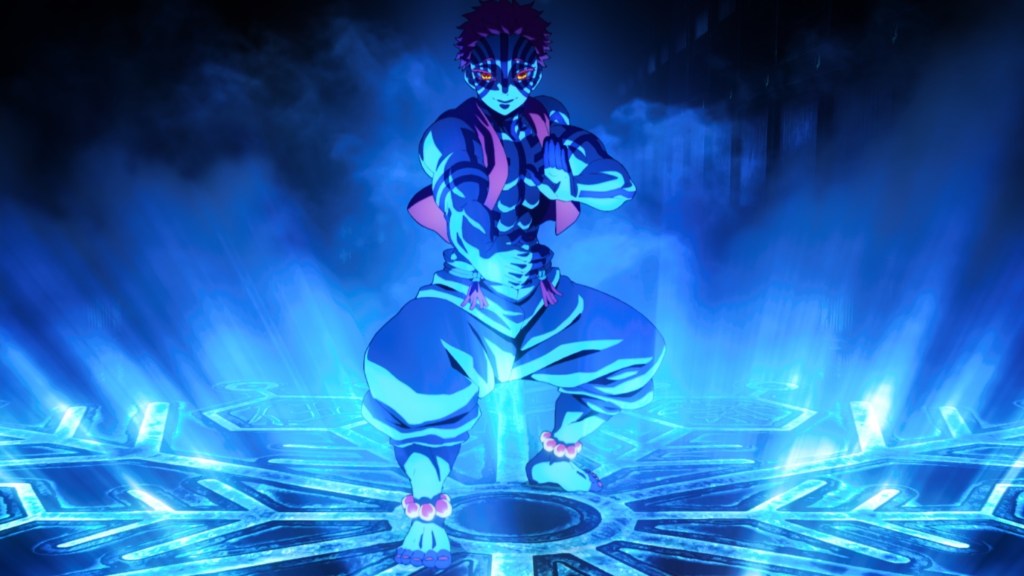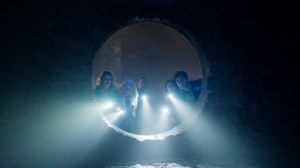Demon Slayer: Infinity Castle, with a runtime of over 2 hours and 30 minutes, longer than most Avengers films, incorporates many elements. It features not just one but three major fights, driving the series toward its climax in an all-out war between the demons and the Demon Slayers. While each battle was remarkable, the standout of the film was undoubtedly the confrontation between Kamado Tanjiro and Akaza, the Upper Moon Rank 3.
Videos by ComicBook.com
Warning: This article contains spoilers from the Demon Slayer manga!
This fight had been anticipated for nearly five years, ever since Akaza killed Rengoku in the previous film. Fans were eager to see Tanjiro avenge Rengoku’s death, but the details revealed about Akaza elevated him into one of the best characters. There are many intriguing layers that tie Akaza’s character to his past, and these three are the most fascinating details you may have missed, whether because they aren’t immediately evident or are hidden within translations and nuances of Japanese culture.
3) Akaza’s Compass Needle Mirrors Something Significant

Whenever Akaza takes his fighting stance, a compass needle resembling a snowflake forms beneath him. This isn’t just a design the author thought looked cool; it is deeply tied to Akaza’s history as a human. The movie revealed perhaps the saddest story in Demon Slayer, with Akaza’s backstory as a human named Hakuji. When he was human, Hakuji fell in love with Koyuki, the daughter of his dojo master, and planned to marry her.
However, Koyuki was killed before she and Hakuji could be married, and since then, he has carried the grief of becoming stronger and wanting to protect. His fighting style, rooted in protection, reflects this pain. The snowflake-shaped compass needle is modeled after Koyuki’s hairpin, which itself was snowflake-shaped. Though this is an intriguing detail that binds Akaza to his past even as a demon, there is something even greater hidden in the attacks he uses.
2) Akaza’s Fighting Moves Are Also Inherently Connected to His Past

While his fighting stance already shows that, even after becoming a demon, Akaza remains deeply connected to his tragic human past; his techniques add an even deeper layer tied to him and Koyuki. The moves he unleashes on Tanjiro and Giyu may sound flashy, suggesting greater strength, but their true meaning is far more compelling.
Akaza’s fighting techniques, written in Japanese kanji, are named after the Japanese fireworks. This is especially poignant given that, as humans, Akaza and Koyuki shared their romance under the fireworks, something Koyuki had always longed to see when she was ill, and it was under the fireworks that she also proposed to him. This emotional connection elevates Akaza’s character, revealing how intricately he is layered with detail. Yet there is an even more intriguing element about Akaza that sets him apart on a deeper level.
1) Akaza Had No Choice in Becoming a Demon

While many demons are eventually revealed to have chosen to become one, Doma, Upper Rank Two, makes it evident from the start that this is the case with him. Akaza, however, was never given a choice. He was forced into it when Kibutsuji Muzan infused his blood into Hakuji without asking, intrigued by his heinous act. Had he been given the option, it is likely Hakuji would have refused, as shown by his decision to end his own life after regaining his memories.
After learning the devastating news of Koyuki and her father being poisoned, Hakuji entered a demonic rage, killing sixty-seven humans. Yet he only targeted those who had conspired in the crime, sparing women and children. This act stands as a testament to how incredibly detailed and poignant his character arc is in Demon Slayer. Unfortunately, such depth is not apparent at first glance. If it were, Demon Slayer’s best character would appear even more appealing than he already is.
What do you think? Leave a comment below and join the conversation now in the ComicBook Forum!









